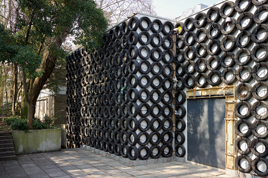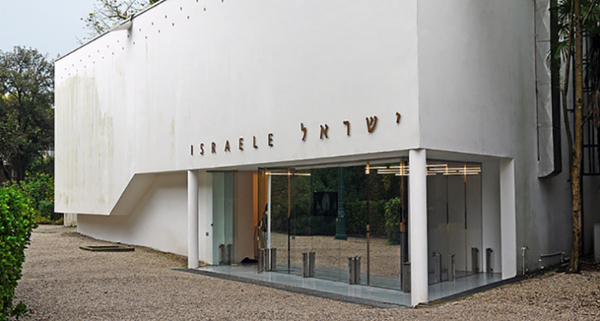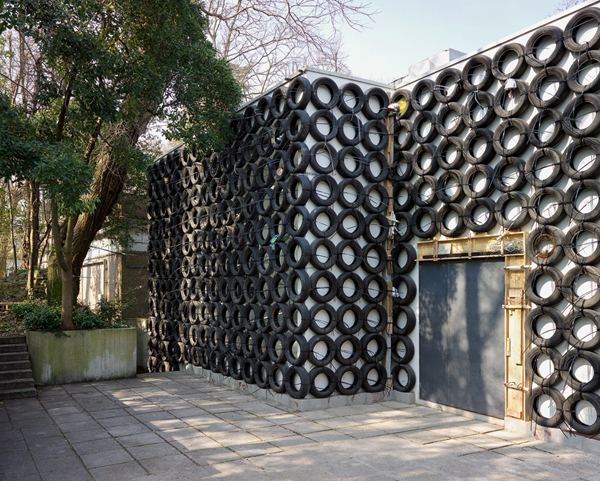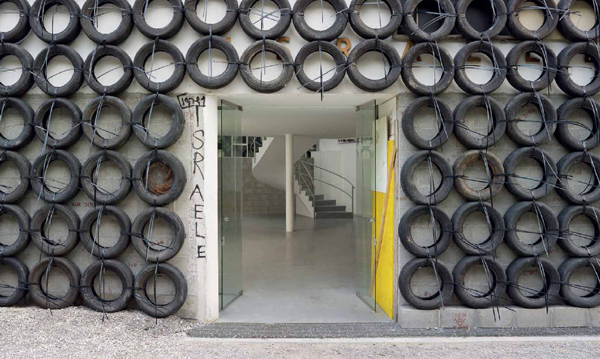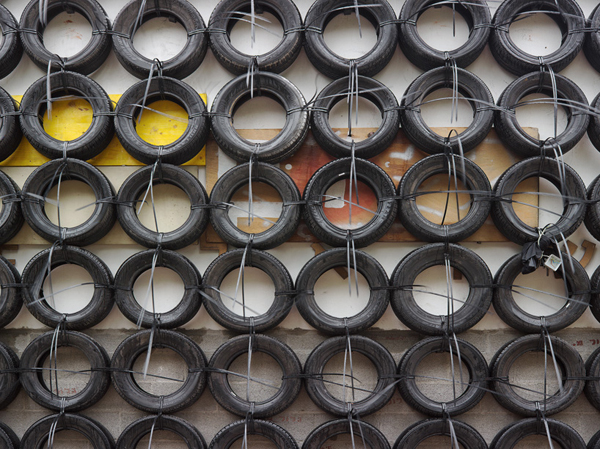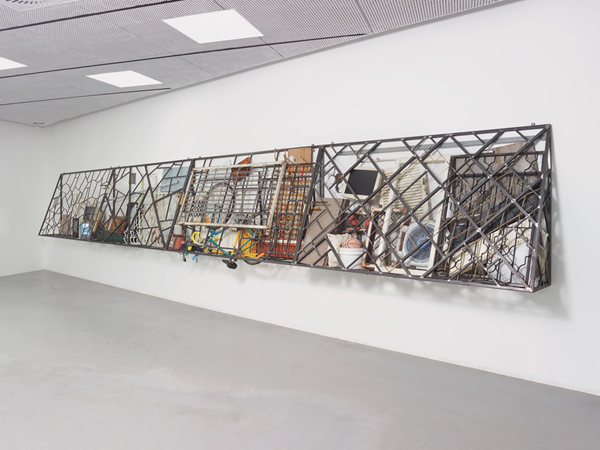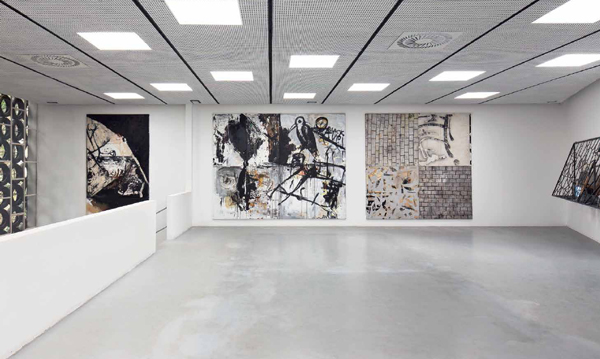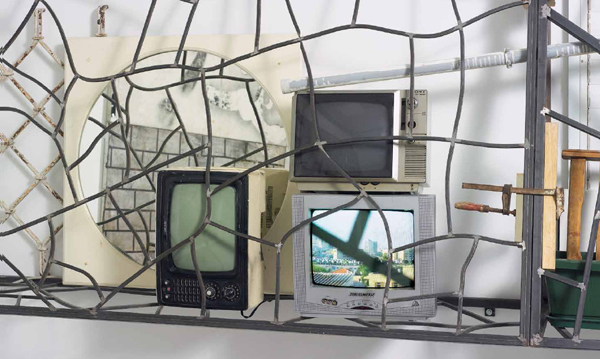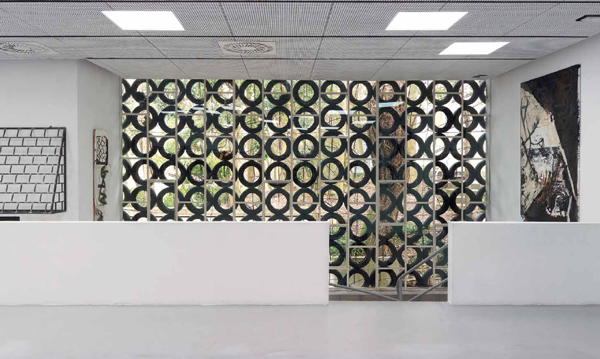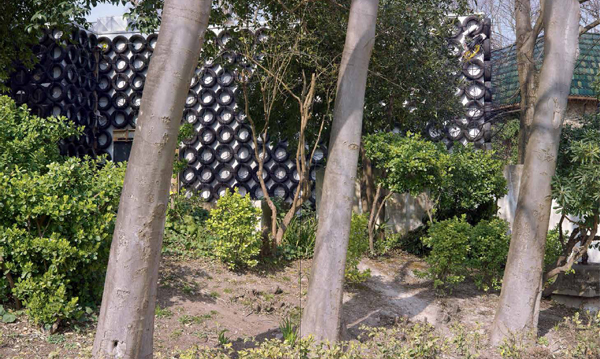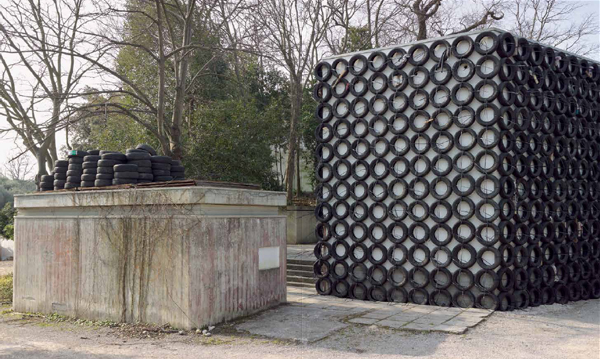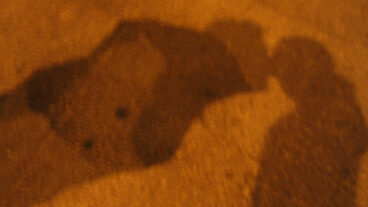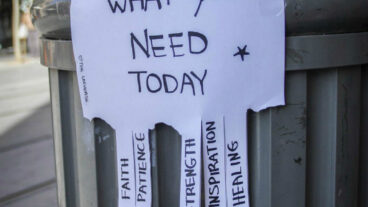The 56th International Art Exhibition La Biennale di Venezia, (the Venice Biennale) is a major contemporary art exhibition that, since its establishment in 1895, has taken place once every two years. The formal Biennale is based at a park, called the Giardini, that includes a large exhibition hall that houses a themed exhibition curated by the Biennale’s director. The theme for the 2015 Beinnale is “All the World’s Futures”.
Also within the Giardini, are 30 national pavilions that showcase their country’s artists. This year, artist Tsibi Geva has created a new, site-specific installation for the Israeli pavilion which is a three-story structure designed in 1952 by noted architect Zeev Rechter (modified by Fredrik Fogh in 1966).
For the installation, entitled “Archeology of the Present,” Geva wrapped the entire building with used tires brought in from Israel, tightly tied to each other to create a grid. The project — Geva’s most ambitious to date — extends over the exterior of the Israeli Pavilion building as well as through its interior.
Geva has been working with used tires for many years but this is the first time he has covered the exterior of such a large structure. Hadas Maor, curator of the Israeli Pavilion, writes, “Upon entering the pavilion, the exterior installation is visible once again from the inside, together with an interior installation including paintings, sculptural elements, and found objects, abolishing hierarchical distinctions between artistic mediums and structures”.
“The tire walls create a clear spatial demarcation while seeming to circumscribe a buffer zone, a protective sphere that has a significant hetero-topic dimension. In this context, the entrance into the pavilion is experienced as an entrance into a clearly defined arena of action”.
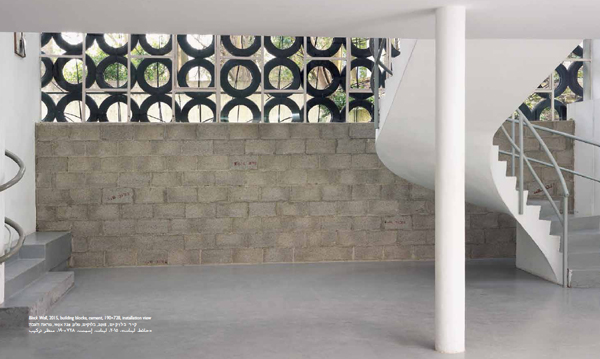
“Geva’s installation coats an existing building rather than constituting a monolithic structure, yet the material and visual power of the tire walls, which envelop the pavilion and transform it into a quintessential sculptural object in space, creates a monolithic cognitive, tactile, and emotional presence”.
“The used tires, which are impregnated with a distinct odor, form an organized network of holes imbued with a protective potential, while simultaneously attesting to a state of danger, constituting a powerful material presence, and communicating a charged, urgent visual and political statement”.
“The enclosure of the pavilion through the construction of block walls overlain by tires creates a series of undefined, intermediate spaces that can only be perceived from within the building. These are enclosed storage spaces – tributes to, or echoes of, the typical Israeli boidem (the Yiddish word for attic or crawl space) – a relatively inaccessible domestic space located under the roof or in a niche within an apartment, and used to store old or rarely used objects”.
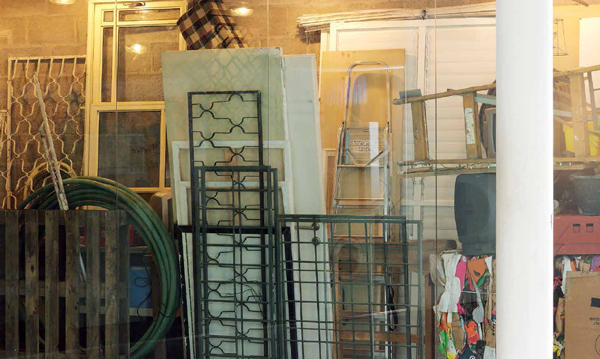
“In the context of the current installation at the pavilion, these intermediate spaces function as storage spaces for subjective awareness and memory. They are filled with an accumulation of doors, shutters, metal lattices, wooden boards, flattened cardboard boxes, found and abandoned objects, artworks, furniture items, personal souvenirs, and more”.
“The presence of these spaces facilitates a process of accumulation that results in excess and in the entanglement of functional, circumstantial, emotional, and existential concerns”.
“The tire walls enveloping the pavilion’s exterior make use of a common everyday object to create an environment charged with layered spatial possibilities: They allude to the political context, in which a tire may function as a protective object capable of absorbing shocks while also constituting a sign of protest and serving as an improvised, readily accessible weapon; at the same time, they also relate to the installation’s architectural and artistic context”.
“This envelope turns the entire pavilion into a sculptural event that is visible from afar and which functions, at first sight, as an outdoor work on the grounds of the Giardini”.
“The project encompasses the thematic and formal characteristics that have come to define Geva’s work over time. Using the exterior as well as the interior of the pavilion, it destabilizes familiar divisions between inside and outside, the functional and the representational, high and low, abandoned, found, and modified elements. It raises self-reflexive artistic concerns and epistemological questions, as well as political and cultural questions pertaining to locality and immigration, hybrid identity, existential anxiety and existence in an age of instability”.
The full catalog is available online at Tsibi Geva’s website. The Israeli Pavilion was realized under the auspices of the Israel Ministry of Culture and Sport – Museums & Visual Art Department, and the Israel Ministry of Foreign Affairs – Division for Culture and Scientific Affairs. The 56th International Art Exhibition La Biennale di Venezia opens on May 9 and runs through November 22, 2015.




